Aurora Orion is a new studio strobe from Aurora Lite Bank, an internationally known manufacturer of lighting equipment. Aurora Orion monolights are currently manufactured in two versions: Orion 200 and Orion 400. The main difference is power, which is 200 W/s and 400 W/s, respectively. You can purchase these strobes separately or bundled with stands, umbrellas, softboxes, etc. In this article, we review an Aurora Orion Kit that includes two Orion 200 flash heads, two spring cushioned light stands, an umbrella, a softbox, and a carrying case.
Aurora Orion strobe is relatively small: 9.5" x 5.3" x 6.7" (240 x 135 x 170 mm). Its body is plastic, which makes the unit really lightweight and portable: 3 lbs (1.4 kg). The quality of the build and materials is very good. The design is modern, stylish, and pleasing, overall.
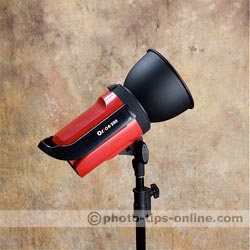 |
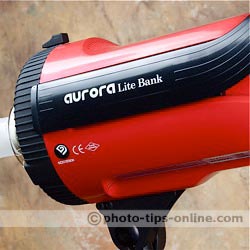 |
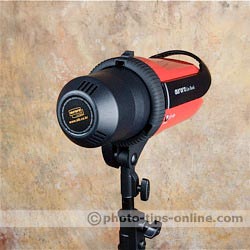 |
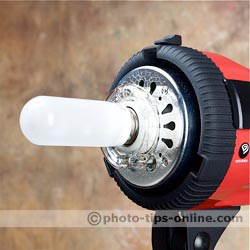 |
The control panel on the back of Orion has an easy to follow layout. The control buttons are rather small, which may not be very comfortable for large hands, but they are still quite usable for everyone.
With Aurora Orion, you get a good range of features including an optical slave, modeling light, audible feedback, and good granularity in the power adjustment.
The power can be set in the range of 3 to 200 W/s (5 f-stop range, from 1/32 to full power). The display can be set to either W/s or f-stop mode. The power increment is 1/10 of a stop, which gives you quite some flexibility in the fine tuning of the light output. Please note, if you select f-stop display mode, each f-stop value is followed by a decimal value. For example, the values from f-stop 8 to 16 are 8.0, 8.1, ..., 8.8, 8.9, 11, 11.1, 11.2, ..., 11.9, and 16.
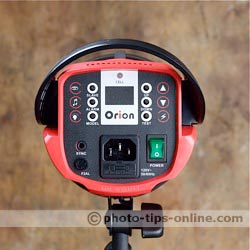 |
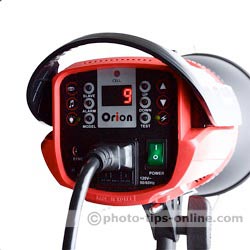 |
When changing power setting, don't be alarmed if the display starts blinking. It only happens when you decrease the power and simply means that the auto-dump feature is activated. The extra power will be discharged as soon as you stop making the adjustments resulting in a single flash.
Aurora Orion is also equipped with a fan-cooling system that keeps the unit cool (the noise level from the fan is very reasonable). In a case of over-heating, the unit shuts down automatically and runs the fan until the normal temperature is achieved.
Orion 200 flash head offers flash duration of 1/2950 of a second, which makes it possible to use it for freeze motion applications (except extremely high-speed movements). The flash duration of Orion 400 is longer: 1/2000 of a second.
The recycling time is fast and ranges from 0.2 to 1.4 sec for Orion 200 and from 0.2 to 1.6 sec for Orion 400.
According to the specification, the color temperature is pretty consistent. It is rated at 5500K and deviates up to +/-250K. As a test, we took 20 shots at full power setting, and the color variations were practically unnoticeable.
We used the same 20 images to evaluate the exposure consistency. The following images are the darkest (left) and the brightest (right) from the series. The difference in exposure is under 1/10 of f-stop, which is quite impressive.
 |
 |
The built-in light sensor allows you to trigger your Orion flash heads remotely with any flash. Of course, you can also trigger Orion using the included sync cord (16' (5 m), 3.5 mm mono to PC).
The modeling light has three modes: "full", "proportional", and "off". The "proportional" mode allows you to really preview your lighting, as the modeling light output adjusted along with the power setting of the flash tube. The modeling lamps are not very powerful (100 W, but can accept 150W, as well), so in a case when there is too much of ambient light, the "full" mode comes in handy. In the "full" mode, you cannot see the ratio between your lights, but you can at least see the direction of the light falling onto your subject.
After each shot, the Orion's modeling lamp goes off until the unit is fully recharged. So, it's easy to see when Orion is ready for the next fire. In cases when you don't use the modeling light, you may want to enable the "alarm" feature to have an audible confirmation about the flash readiness. You can also combine these two methods if you like.
The included standard reflector has a hole in its surface for inserting an umbrella through the hole into the umbrella fixing underneath the strobe head. Going through the reflector allows the umbrella to be well-centered for better diffusion.
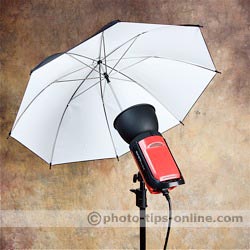 |
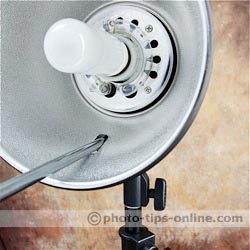 |
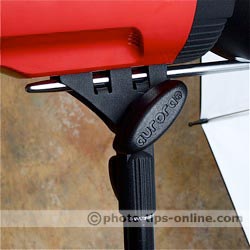 |
The included softbox comes with a speedring that can accept other softboxes, too. The softbox is flat-faced, and it also includes an inner baffle for extra diffusion.
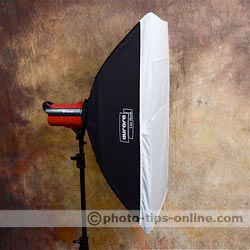 |
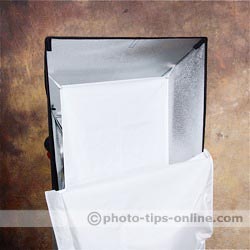 |
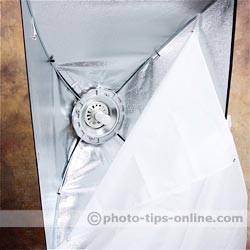 |
Aurora Orion Kit comes with a high quality carrying case. The whole kit weighs around 22 pounds (10 kg), including the case. Our measurements show that, once you learn how to assemble the kit, it takes less than 6 minutes to do it, and the packing time is under 10 minutes (assuming that you don't rush and do everything carefully).
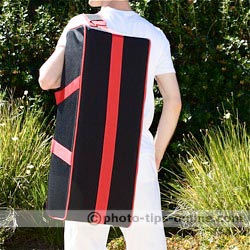 |
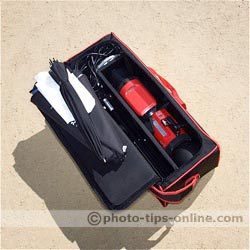 |
Aurora Lite Bank also makes a number of accessories for its Orion lights, so you can get more control over your lighting. The images below show some of the Orion accessories: barndoors (they also double as a gel holder), gels, grids, a snoot, and a background reflector.
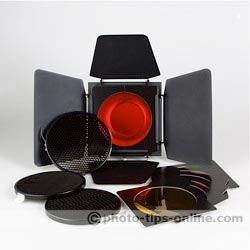 |
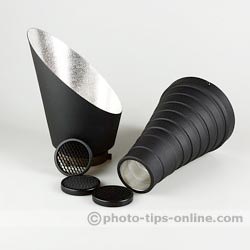 |
The following images were taken with two Orion 200 lights at a Halloween party. One of the strobes were used with the softbox while the other one was equipped with the snoot and a grid.
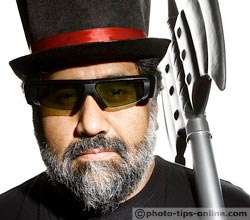 |
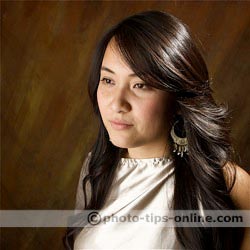 |
 |
To conclude, Aurora Orion Kit can be a great choice for studio lighting. Small weight and the included durable carrying case makes it possible to easily take this 2-light studio kit to a location shoot. The high quality, consistent exposure and color balance, short flash duration, fast recycling, and a good set of features of Aurora Orion should be able to impress a wide range of photographers.